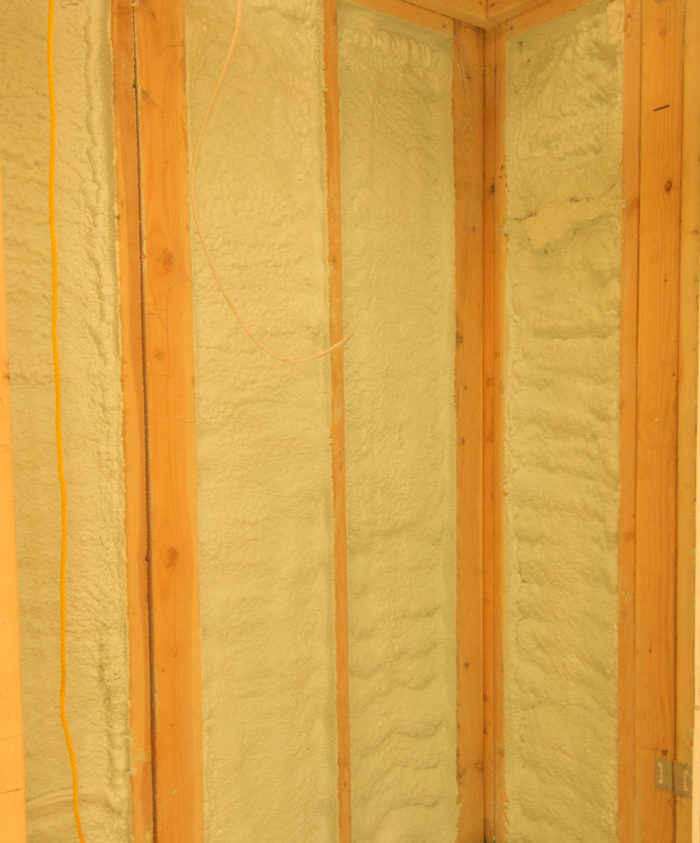
Image Credit: Photo credit: Giles Douglas
Once upon a time, house insulation meant an extra sweater — and stop your damn complaining. Men were men, women were women, and cats and dogs were cats and dogs, I assume. Houses included features to produce and retain heat, of course — things like double back-plaster walls and central chimneys. But until the 20th century, insulation barely existed in any formal sense.
There were some tentative initial steps. My house (built in 1939) contained Kimsul insulation. Kimsul was one of the first commercially available insulations, sold in Sears & Roebuck catalogs with their kit house plans. Kimsul was 1 inch of cellulose sandwiched between two sheets of Kraft paper. Most of the Kimsul in my house had disintegrated or did so upon touch.
Not much — but, hey, you’ve got to start somewhere.
It’s from these humble initial efforts that R-value and heat retention entered the national conversation. The question today is: in the increasingly complex world of building science, how meaningful is R-value? Can we do better?
The strikes against R-value
The challenge, simply put, is that the R-value listed on the insulation package is not the same as the R-value of a wall insulated with the material. If you install R-19 batts in a wall cavity, can you say it is an R-19 wall? No, not really.
There’s thermal bridging at the studs, where heat travels more easily through the framing and past the insulation. There are holes and gapping where insulation sags at the top, pulls away from the sides, and is forced around electrical outlets and pipes. Air moves both across the wall cavity and within it.
Then there’s the question of what are we measuring: the insulation’s performance in the wall cavity or the performance of the entire wall? The R-value on the insulation bag is the tested heat retention ability of the insulation. But it’s the wall we care about.
R-value is just one measure
The fact is that we are moving to a world in which building science, in all of its complexity, assumes greater prominence. Most homes in my neck of the woods were uninsulated (or barely insulated) when first constructed. Adding any insulation produced such large improvements in comfort that a crude measure like R-value sufficed. If a frigid house went from R-2 to R-10, and it was noticeably more comfortable, then R-value worked.
The window industry went through a similar evolution. The end result is the now ubiquitous window labels which detail all their performance characteristics. The window labels list the U-factor (the inverse of R-value) of the whole window and its SHGC (solar heat gain coefficient) — vital measures for picking a window. Live in the frigid north? Pick one with good U-factor. Live in the sunny south? Pick a window with a low SHGC to keep out excess sunlight.
The metrics we use to measure the performance of insulation will likely evolve in the same way.
The future of R-value
It’s possible to measure whole-wall R-value instead of the R-value of the insulation material. We can also discuss whether a wall is air-permeable, and whether the wall would benefit from an air barrier. How vapor-permeable are the various layers? Is the wall rain-resistant? For example, EPS is somewhat vapor-permeable and rain-resistant.
So is R-value dead? No, but it needs to be understood as part of the picture. It’s one measure of a building material. A car’s fuel efficiency may be measured with just one number (miles per gallon). But insulation, like a window, has several important characteristics beyond R-value.
R-value is a single measure of insulation performance; it’s not the only one.
Erik North, the owner of Free Energy Maine, is an energy auditor and home performance specialist in Westbrook, Maine. He is also the author of the Energy Auditing Blog.
Weekly Newsletter
Get building science and energy efficiency advice, plus special offers, in your inbox.





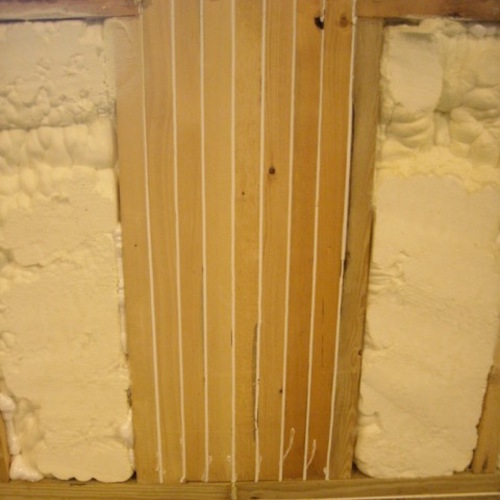
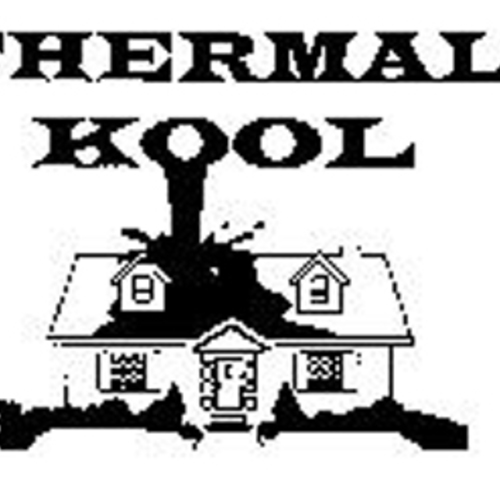
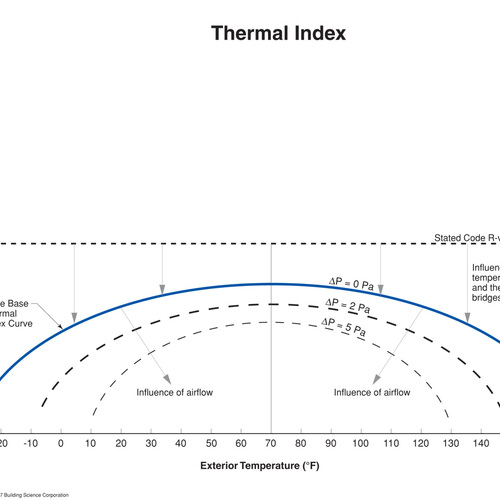
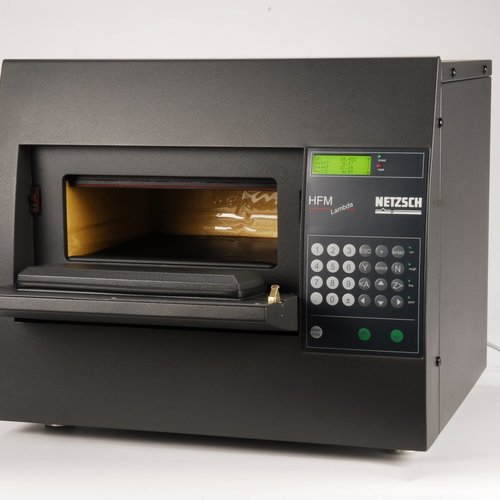






16 Comments
The Thermal Metric Project
In addition to what you've shown here, there's also the fact that R-value isn't a constant quantity. Building Science Corporation's Thermal Metric Project has been doing a lot of great work on the performance of wall assemblies, showing the dependence of R-value on temperature and air leakage.
You can read about it on their website, and the most recent article would be a good place to start:
The Thermal Metric Project
They haven't posted it yet, but they've found something surprising in the temperature dependence of the R-value of one particular type of insulation. They should be making that public soon.
Response to Allison Bailes
Allison,
Thanks for the comment. In addition to the article on the BSC website, there are two articles on the Thermal Metric Project here at the GBA website:
A Bold Attempt to Slay R-Value
Air Leakage Degrades the Thermal Performance of Walls
Allison: would you care to
Allison: would you care to share the insight ? ( if not restricted )
Does every insulation material used nowadays exhibit the same performance increase with drop of temperature ??
When they are testing for temperature related insulation, do they use a low temp on both sides
or simulate real situation with let's say +20c int and 0c or lower ext ??
I ask because i would think that the temperature within the insulation itself needs
to be acquainted for the thermal conduct. behavior.
Response to Jin Kazama
Jin,
Read the articles I linked to! The answers are there -- including the answers to these two questions:
"Does every insulation material used nowadays exhibit the same performance increase with drop of temperature?"
"When they are testing for temperature related insulation, do they use a low temp on both sidesor simulate real situation, with let's say +20c int and 0c or lower ext?"
Martin: on the topic ... as
Martin: on the topic ... as hard it is for consumers and non educated workers to grasp the implications of the R value within an installation, i want to know how many grams of cookies there are in the 12 cookies pack.
Having a few different R value at different tempeatures could be a nice addition ...
getting total wall thermal values on insulation products ??? euh what?
How do you propose to do that with the many possibilties, new codes required ext insulation in some places... and what about when mixing 2-3different types of insulations in the same wall assembly ?
I wonder if one could use the temp dependance on the thermal conduct knowledge, to be able to use a different insulations for different layers .. let's say polyiso under toward inside, covered by an EPS layer...
R values should be stated at -20c 0c and 20c ( or -30/c/+30?? ) that should be enough to help consumers and not too complicated as far as the R value goes ..
Martin : i read your links
Martin : i read your links after replying ... i will try not to repeat that mistake again sifu Martin ! :p
But i do not see tech data on the diff insulation VS temp nowhere ...???
And also i did not find a clear answer as to how they test ( or the other sanctionned body do ) .
I don't understand now why would the insulation value drop when going to the very cold ..
seems conterinuitive !
Wow i really have hard time
Wow i really have hard time finding measurements of R value for rigid boards under 0F ..
from a dow document i found that it got up to near R6 @ 0F
but they don't push it further ...
Some Rs go up with falling temp, some down, and other factors.
There is no hard rule- the derating/uprating curves is a function of the dew points of the entrained blowing agents as well as the polymers used. DuPont has a decent but brief paper on the topic located here: http://www2.dupont.com/Formacel/en_US/assets/downloads/h54876_temperature_effect_on_R_value.pdf
With modern versions of EPS and pentane-blown iso the blowing agent escapes within days/weeks, HFC245fa blown iso has a decay of years (see curves on p.18: http://www2.dupont.com/Formacel/en_US/assets/downloads/UTECH_presentation_20090331.pdf ) and a higher intial R value, but with closed cell polyurethane and XPS the HFC blowing agents dissipate only over decades. For rating purposes some intermediate value is used when the dissipation is decades long. European XPS is blown with CO2 rather than HFCs, which escapes even more rapidly than the pentane used for blowing EPS, and has pretty much identical R/inch &derating curves as EPS of similar density. (R4.2/inch XPS vs. R5/inch is a marketing problem in the US, but the HFCs used in the US are not allowed for those applications under European regulation.)
With fiber insulation it's a bit trickier, and there is a "heat exchanger effect" during infiltration and convection currents through the material that make it a not-so-simple model, which is one of the interesting surprises coming out of the BSC research ( mentioned on a previous blog here.) I'm looking forward to reading more about their findings!
Dana : thank youy for
Dana : thank youy for pointing that out about the XPS ..i had never heard about this marketing trick before.
But if we remove the blowing agent factor for ISO ( let's consider aged ISO ) what is its temperature/R curve then ??
When they state ( Dupont, BSC etc.. ) insulation tested at 0C, is all of the insulation at 0c,
or 0c to 20c from exterior to interior ??
Also, all of this temperature related differences i insulation, is it taken into account in most energy softwares ??? 10-20% of hole house insulation scheme = a big thing ..
So PUF drops by almost 1.5R at -20c or lower?? what is the most commonly used blowing agent for PUF ?
all very interesting !!
More energy educated people need to be involved with insulation
I am currently doing a heck of a lot more closed cell spray foaming these days over cellulose... I am not a fan of fiberglass personally for all the known reason, plus I have read the curve drops when it the temp. drops.
The biggest problem is, spray foaming with out knowing the home's Building Airflow Standard (BAS) is virtually reckless. We do audits on most of our jobs, if in a new construction phase, we send out an auditor for FREE to do a clip board audit and a blower door test.
SPFCA now is doing certifications accross the board for the SPF industry and will become the standard soon enough, but there must be BPI/LEED or RESNET people involved with new buildings, and even retrofits.
I have seen real world the positives of closed cell spray foam, and I am a believer. For folks who do not have the budget for SPF there is always cellulose, and again through family and friends (even customers who became friends), I have seen a major difference in their homes.
I support and ALWAYS air seal before I have my guys insulate, and that makes the biggest difference between me and my competitors.
Insulation test temperatures
The testing temps usually refer to the average temp through the material, at the ASTM C518 delta-T of ~30F/17C.
The 75F average temp number is straight out of the ASTM C518 spec & FTC labeling requirements. Insulating concrete form manufacturers often fudge it and include only the 40F ASTM C518 R-values for Type-II EPS in their literature, rather than the 75F number that the FTC would require were it being sold as insulation, which is a 7% difference. In all but US climate zones 7 & 8 using the R4.5/inch rather than R4.2/inch would be a significant overstatement of it's true average performance in an ICF. It feels like an intentional deception rather than incidental error in my view, but it's hard to prove, and since it's not being sold as an insulation, but rather a SYSTEM, it's probably not going to run into FTC problems. (Gross overstatements of performance based on the dynamic thermal mass of those system has landed some of those vendors in court on FTC violations. As an industry they have a track record of exaggerated performance claims, and I'm not inclined to give them the benefit of the doubt on intent. YMMV.)
IIRC most 1.5lb rigid polyiso sheeting currently used in N. America is blown with pentane, but sprayed-in-place 2lb polyiso is usually HFC245fa or it's near-equivalents (like the stuff DuPont is selling in one of those papers.) For locations with a -20 or -25C outside design temp, I will typically derate 1.5lb polyiso to R5.5 per inch for sheathing dew point estimations. For 2 & 3lb roofing iso that drops to R5.2/inch. There is definitely a crossover point at cooler temperatures at which XPS or EPS outperforms it, but unless your AVERAGE wintertime outdoor temps are significantly cooler than -20C, it's usually still the better performer from all-year energy use point of view.
I'm not sure it's fair to call the XPS aged R data a "marketing trick". It could take more than 50 years for 1.5lb XPS to hit a fully depleted R4.2/inch, and it starts out it's service life better than 10% higher performance than labeled. (Used for dew point control on wooden sheathing, in 50 years your average midwinter temps may have moved enough to compensate, but it's always better to build in more margin than that anyway.)
Dana: for XPS, i was
Dana: for XPS, i was referring to the lower than advertised R value beause of the blowing agent as described in dupont paper, at low temperatures... 50 years = life of product
For polyiso, how many years does it take to complete blow off ?? 2-3 years or mroe like 15-20 ?
if it is under 5, i'd be tempted to use the aged R value instead of the start one
How is the performance of ISO afer the gaz is completely released??
I am aware of the ICF manuf claimes of thermal mass and wrong R values,
but if you look at the ORNL report that sifu Martin linked in an earlier blog ( double linked for me )
http://www.ornl.gov/sci/roofs+walls/research/detailed_papers/Whole_Wall_Therm/content.html
the ICF test wall performed pretty well , even if marginally, better than using R0 for concrete !!
""""""""""""""""""""""
The testing temps usually refer to the average temp through the material, at the ASTM C518 delta-T of ~30F/17C. The 75F average temp number is straight out of the ASTM C518 spec & FTC labeling requirements.
"""""""""""""""""""""""""
i have hard time following here ( and i don't have access to the document )
you say a average temp of 24c @ delta of 17C??
does that mean they setup a temp difference of 17c on each side,
and the average internal temperature of the insulation being tested needs to be at 24c ??
It depends...
The decay rate of the blowing agent enhancment depends on the blowing agent and the foam density. With PIR blown with pentane it approaches the asymptotic value quickly- months, if not weeks. With HFC blowing agents it's measured in years, possibly decades.
Most 1.5lb iso would probably still test at R6/inch after decades of service, but probably not R6.5 as some is currently labeled.
The FTC requires that insulation manufacturers label the product as it's performance tested according to an ASTM C518 test procedure, with 75F as the average temperature through the material, with 30F difference between the warm and cool sides. Labeling an insulation with it's tested or untested performance at other temperatures, & temperature differences is explicitly against regulation. There are good reasons for bounding it both in average temp and temperature difference: A bubble-pack radiant barrier vendor might do pretty well if they were allowed to use a temperature difference of 200F, but they are not allowed to. At 75F with a 30F delta T it's about R2, but with a 200F delta-T it might hit R10 performance, since radiant heat transfer is a function the difference between the fourth powers of the cold & warm side temperatures Kelvin. Using 75F is a compromize between cooling season and heating season performance, and 30F is a reasonable middle-of-the road heating or cooling seasonal average delta-T that the material is likely to experience. A the temperature extremes the delta-Ts be higher and the average pretty far from 75F, but to assign a single number rather than a function, this is what has been settled on for labeling purposes.
Dana : thanks for clearing up
Dana : thanks for clearing up the testing process ..u explained it perfectly :)
A question is still floating in my head about polyiso,
and the goal would be to understand its performance alteration @ cold temperature vs release of blown agent.
earlier you stated :
"""""""""""""""""
With modern versions of EPS and pentane-blown iso the blowing agent escapes within days/weeks,...
"""""""""""""""""
Are all recent polyiso blown with pentane ??
Does it mean that a pentane blown iso would not exhibit the condensation agent gaz problem @ cold temps once installe ( let's assume aged a year )
What then would be its performance behavior under low temperatures ??
I guess i will need to look into the brands i use now to learn the agent used ... instaling a product that has a fairly large drop of performance during cold temperatures when it is required to perform locally, for 10year+, is not acceptable.
Firestone BP seems to be using pentane , i will confirm with rep.
http://www.firestonebpco.com/TemplateFiles/includes/common/displayFile.ashx?fileId=11473
Ah do i love this field, sooooooo much to learn every day of the week :)
Can't stop thinking about XPS trapped agent performance under cold condition
am i glad i haven't used it that much ( and none at my place :p )
Not all, but maybe most...
...1.5lb iso is blown with pentane, but some (possibly the denser goods?) may be blown with HFCs. Hopefully any of those will be switching over to the low-GWP versions like the one DuPont has released.
The vaporization temperature/boiling point of liquid pentane at one atmosphere pressure is +36C, and even at higher pressures is under 200C. That characteristic is exploited for use in blowing foam. But it's still a small enough molecule to find it's way out fairly quickly. Any residual pentane in the polyiso is already in liquid form at 0C- it's already well down the liquid-side slope of the temperature/R curve affected by blowing agent dew point. But the the vaporization temp is low enough to alter early-life insulating characteristics of roofing foam. (I haven't seen the curves, but it's it would be odd if it somehow DIDN'T have an effect.)
Pentane freezes at about -130C @ one atmosphere pressure, well below any temperature relevant for building materials in populated areas, so it's heat of fusion won't be coming into play either.
I'm not sure if any manufacturers are isolating and using neopentane, but it has a much narrow gap between boiling temp (+9C), and freezing (-16C), which would do some interesting things to the curve at building-relevant temperatures. It's the same molecular weight as simple-pentane but has a spherical shape and larger diffusion cross section, and may have a much longer escape rate/decay from the foam too.
Dana : ok , you are getting
Dana : ok , you are getting in technical chemical details now ... are you trying to n00bify me ? :p haah
( i'm already a n00b ..no need to push it :p )
But thanks again for explaining.
Would the polyiso then exhibit a loss of R value going down as the curve in Martin's link shows ?
I believe i got lost somewhere reading all the info ..
Please confirm with me ...
1- EPS and pentane Blown polyiso loose their blowing agent very quickly, thus agent don't influence ( or not much if some is left ) the tempearture change of the R value
1- EPS r value increases with lower temperatures
- XPS and PUR ( closed cells ) trapps some of the used agents for decades, this affects their performance at different degree and temperatures depending on the agents used
( usually negatif impact at low temperatures beacuse of the condes. point of the agents trapped )
- i could care less about FG batts :p
- placement of temperature affected insulants within assembly will impact its behavior
when exposed to extreme temperatures
Log in or create an account to post a comment.
Sign up Log in